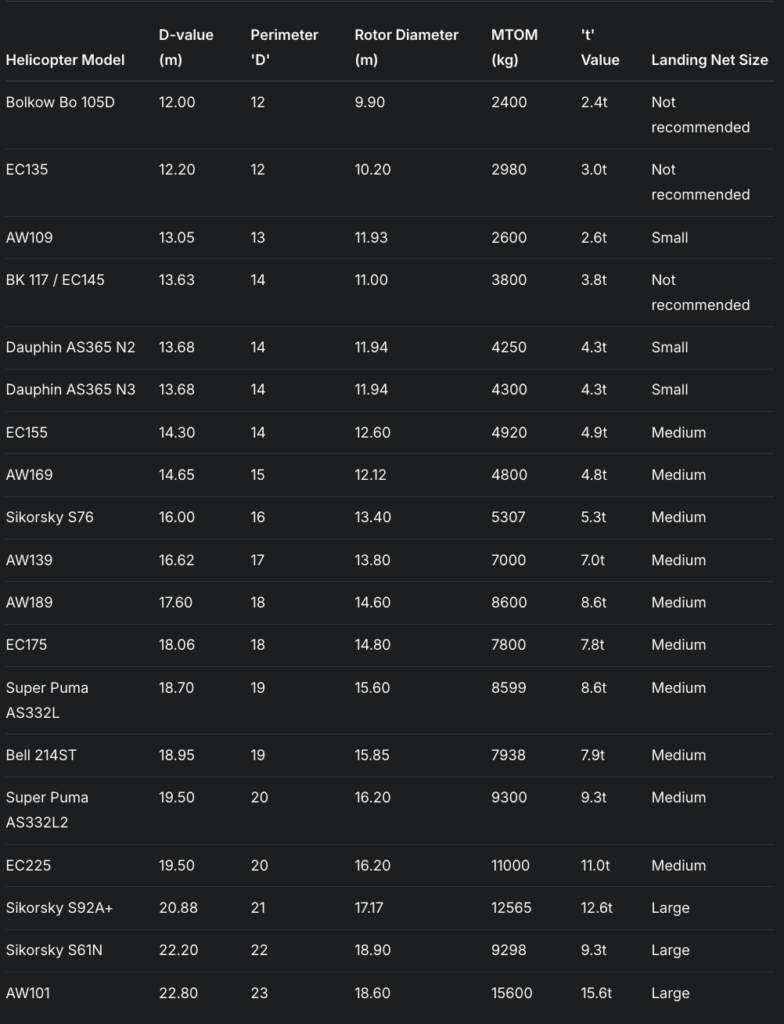When it comes to landing a helicopter, one of the first questions that comes to mind is, “How much space do you need for a helipad?” The answer isn’t as straightforward as one might think. Helipads, or helicopter landing pads, come in various sizes and configurations, each with its own set of helipad requirements. In this article, we’ll explore what constitutes an appropriate sized landing zone for a helicopter and delve into the specifics of landing zone helicopter dimensions.
What is an Appropriate Sized Landing Zone or Area for a Helicopter?
The size of the landing zone for helicopters largely depends on the type of helicopter you intend to land. Smaller helicopters like the Robinson R22 may require a landing zone with a diameter of at least 25 feet, while larger commercial helicopters like the Sikorsky S-92 may need a landing zone that’s at least 100 feet in diameter. For a helipad, the minimum for one placed on a hospital building is 40′ x 40′. Typically, Helipads tend to have a square shape while helidecks have an octagonal shape. There can be variations to this including circular shapes, an added parking area, and more. CAP 437 gives helideck sizing based on the design helicopter as seen in the table below.

Helicopter Landing Pad Requirements
The Federal Aviation Administration (FAA) and the International Civil Aviation Organization (ICAO) have set forth guidelines for helipad requirements. These guidelines cover not just the size but also the surface material and even lighting. According to the FAA, the helipad’s Touchdown and Lift-Off Area (TLOF) should have a length and width that are at least 1.5 times the overall length of the largest helicopter that will use the helipad.
Landing Zone Helicopter Dimensions
When planning the dimensions of a landing zone for helicopters, it’s crucial to consider not just the size of the helicopter but also the surrounding environment. Obstructions like trees, power lines, and buildings can significantly impact the safety of the landing zone. The Final Approach and Takeoff Area (FATO) should be free of such obstructions and should be at least 2 times the length of the largest helicopter that will use the helipad.
Helicopter Helipad: Surface Material
The surface material of the helicopter helipad is another critical factor. Concrete and asphalt are commonly used for permanent helipads, while grass or even compacted soil may be suitable for temporary landing zones. Aluminum is becoming the most popular option due to weight, ease of maintenance, and no welding requirements. The helipad should also have appropriate markings, including the iconic “H” symbol, to guide pilots during landing. Hospital helipads may have a cross symbol in the center.
Additional Helipad Requirements
Beyond the size and surface material, other helipad requirements include safety features like perimeter fencing, windsocks for indicating wind direction, and appropriate lighting for nighttime operations. It’s also essential to have fire-fighting equipment readily available in case of emergencies.
Helicopter Helipad: Summary
Determining how much space you need for a helipad involves a comprehensive understanding of various factors, including the type of helicopters that will use it, the surrounding environment, and regulatory guidelines. By taking into account these elements, you can create a safe and efficient landing zone for helicopters.
By understanding these key aspects—landing zone helicopter dimensions, what is an appropriate sized landing zone for a helicopter, and helicopter landing pad requirements—you’ll be well-equipped to answer the question, “How much space do you need for a helipad?”

